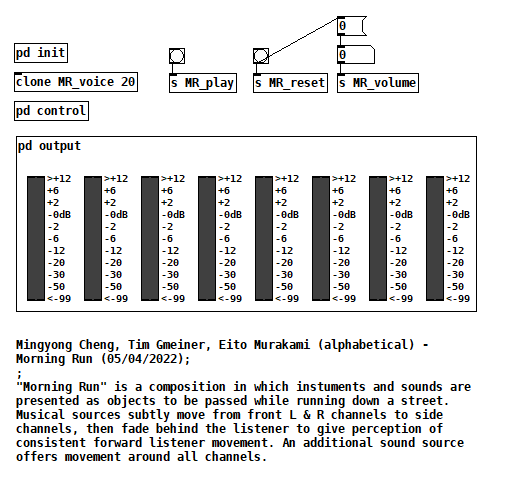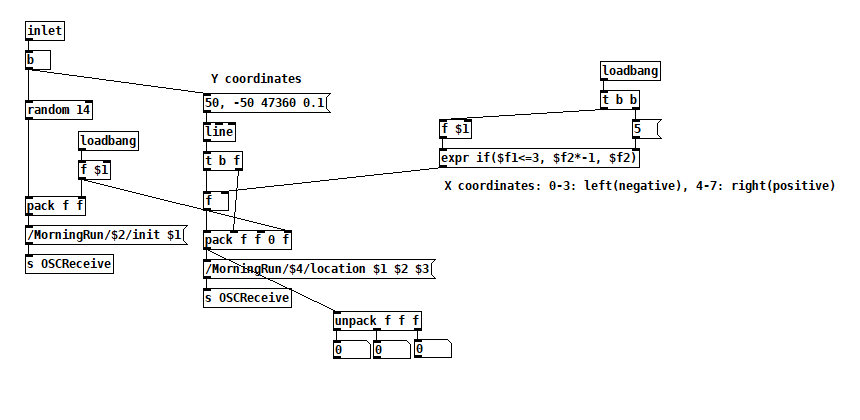“Morning Run” (2022)
Timothy “Ill Poetic” Gmeiner - creative director, composer and graphic score artist | Eito Murakami - sound spatialization development | Mingyong Cheng - visual artist
About: “Morning Run” is a nonlinear audiovisual generative composition-installation that presents object-based spatialization in a physical space using VBAP (vector-based amplitude panning) and reactive visuals as a means of exploring relationships between music and perceived time. In this piece, field recordings and musical elements are randomly triggered in relation to generative environmental objects (buildings, trees, parks, etc.) across an ongoing visual horizon.
The effect to the experiencer(s) is to impart the perception of a morning run down various streets, in which both field recordings of common neighborhood sounds and musical elements of the composition breeze past the left and right side of the experiencer(s) at variable speeds.
Philosophically, “Morning Run” explores music in relation to time: specifically, the idea that the whole of a perceived linear composition exists across all of time, rather than something that begins and ends at distinct timestamps. In “Morning Run”, the entire piece is complete, and it is theoretically up to the experiencer to determine how they choose to “run” through the piece.
This is illustrated through a series of graphic scores (below) that somewhat synesthetically maps musical elements across images of my neighborhood streets. These scores present the experience from a left-to-right-view, a top-down view and a first-person horizong view.
The left-to-right view (pictured above) shows the A and B sections of the composition with each block representing two measures. The pattern of percussion peppers the street, the bassline sits in the guard-rail and the Rhodes keys flesh off the guard-rail with additional chords sifting through the building. Sprinkles of loose keys and birds fill the sky.
The first-person horizon view re-imagines music creation and production as a 3-dimensional street to walk down and create in. The graphic score views music not left-to-right, but as a series of ongoing sounds that exist past, present and future. In this example, measures of time are counted moving toward the horizon line, frequency is measured along the Y Axis. Each element of the song (kick, snare, keys, vocals, etc) streaks toward the center-point within its own sub-section. The colors are informed by the frequency of the instrument and are meant to interact loosely with the environment.
TBD: VBAP Spatialization approach and application, Touch Designer real-time generative visuals.
Contact: Timothy Gmeiner: tgmeiner@ucsd.edu | Eito Murakami: eitom@stanford.edu | Mingyong Cheng m2cheng@ucsd.edu






